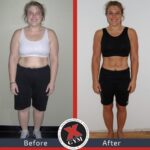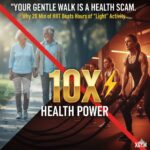I’ve always been passionate about viewing the body as a holistic ecosystem where everything is interconnected. Today, let’s dive into the fascinating world of aging—not as an inevitable decline, but as a process we can influence through natural, root-cause approaches, and slow it down as much as we can (anti-aging).
Inspired by emerging research in longevity science, I’ve put together this visual guide (see the diagram above) highlighting what I call the “Pillars of Anti-Aging.” At the heart of it all? Inflammation, the silent fire that fuels premature aging if left unchecked.1
Think of these pillars as interconnected spokes in a wheel: when one wobbles, the whole system suffers. But the good news? By addressing them with lifestyle, nutrition, herbs, and mindful practices, we can promote graceful aging, vitality, and even reverse some damage. Let’s break them down one by one, exploring how they contribute to aging and simple, evidence-based strategies to fortify each pillar.
1. Inflammation: The Central Flame
Inflammation isn’t inherently bad—it’s our body’s defense mechanism against injury or infection. But chronic, low-grade inflammation (often called “inflammaging”) accelerates aging by damaging cells, tissues, and DNA over time.2 It’s linked to everything from arthritis to heart disease and cognitive decline.
- Natural Support: Prioritize an anti-inflammatory diet rich in omega-3s (wild salmon, flaxseeds), turmeric (with black pepper for absorption), and colorful veggies like berries and leafy greens.3 Incorporate stress-reducing practices like forest bathing or X Gym workouts, as emotional stress fans the flames. Supplements like curcumin or boswellia can help, but always consult a practitioner for personalized dosing.4
2. Stem Cell Regeneration: The Renewal Engine
Stem cells are our body’s repair crew, regenerating tissues and maintaining youthfulness. As we age, stem cell function declines due to inflammation, toxins, and poor lifestyle, leading to slower healing, weakened immunity, and organ degeneration.56 This pillar is crucial for longevity—think of it as your internal fountain of youth drying up.
- Natural Support: Boost regeneration with intermittent fasting (e.g., 16:8 method) to activate autophagy, the body’s cleanup process.7 Foods like bone broth, rich in collagen and glycine, support stem cell health. Herbs such as astragalus or gotu kola have shown promise in traditional medicine for enhancing vitality.8 Exercise, especially resistance training, stimulates stem cell activity—and the X Gym style is perfect (both strength and Xardio because of our unique TUT and CMF principles).
3. Epigenetics: The Gene Expression Switch
Epigenetics isn’t about changing your DNA but how your genes are “turned on or off” by lifestyle and environment. Aging often involves harmful epigenetic shifts, like methylation changes, that promote disease and reduce resilience.910 Inflammation can trigger these shifts, making you biologically older than your chronological age.
- Natural Support: Epigenetic influencers include organic nutrient-dense foods: cruciferous veggies (broccoli, kale) and sprouts for sulforaphane, which supports detoxification and gene protection.11 Green tea’s EGCG and resveratrol from red grapes or berries can positively modulate epigenetics.12 Avoid toxins like plastics (BPA) and pesticides—opt for organic. Mindfulness meditation has been shown to favorably alter gene expression related to stress and aging.
4. Metabolism: The Energy Balancer
Metabolic dysregulation, including insulin resistance and mitochondrial dysfunction, slows down energy production and accumulates waste, hastening aging.13,14 Inflammation disrupts metabolic pathways, leading to fatigue, weight gain, and chronic conditions like diabetes.
- Natural Support: Embrace a whole-foods diet low in refined sugars, high in healthy fats (avocados, nuts) and fiber. Bitter herbs like dandelion or berberine can enhance insulin sensitivity.15 Incorporate HIIT workouts to rev up mitochondria. Many anti-aging experts define aging as “The relentless pursuit of comfort.” If you are willing to make active choices over couch choices, you will age much slower! And don’t forget sleep—7-9 hours nightly optimizes metabolic hormones like melatonin, a potent anti-aging antioxidant.
5. Proteostasis: The Protein Maintenance System
Proteostasis refers to the balance of protein synthesis, folding, and degradation. With age, misfolded proteins accumulate (i.e., Alzheimer’s plaques), driven by inflammation and oxidative stress, leading to cellular chaos and tissue breakdown.16,17
- Natural Support: Support proteostasis with sulfur-rich foods (garlic, onions, eggs) and antioxidants from spices like cinnamon. Fasting or caloric restriction mimics can activate proteasome activity. Herbs such as ashwagandha help manage stress-induced protein damage.18 Hydration is key—aim for half your body weight in ounces of water daily to aid cellular cleanup (if you are between 100-250 lbs.).
6. Stress: The Silent Saboteur
Chronic stress floods the body with cortisol, which erodes telomeres (DNA protectors), amplifies inflammation, and disrupts all other pillars.19,20 It’s not just emotional—environmental stressors like pollution or poor sleep count too. Stress is a root cause of accelerated aging.
- Natural Support: Adaptogens like rhodiola or holy basil balance cortisol levels.21 Practice breathwork (e.g., 4-7-8 breathing) or grounding techniques in nature. Prioritize sleep hygiene: dim lights, no screens before bed. Journaling or gratitude practices rewire the brain for resilience.
7. Macromolecular Damage: The Cumulative Wear
This pillar encompasses damage to DNA, proteins, and lipids from free radicals, toxins, and daily wear-and-tear. Inflammation exacerbates it, leading to mutations, cancer risk, and frailty.22,23 It’s the “rusting” of your body’s machinery.
- Natural Support: Antioxidant powerhouses like vitamin C (citrus, bell peppers) and E (almonds) neutralize damage. Detox protocols with milk thistle or activated charcoal support liver function.24 Reduce exposure: filter your water, use natural cleaners. Sauna therapy or cold plunges enhance repair mechanisms like heat shock proteins.25
Aging isn’t a battle to fight but a dance to master. By nurturing these pillars holistically, we can reduce inflammation’s grip and extend healthspan—the years we live vibrantly. Remember, one size doesn’t fit all; functional testing (like telomere length or inflammatory markers) can guide personalized plans.
Footnotes
-
Inflammation and aging: signaling pathways and intervention … – https://www.nature.com/articles/s41392-023-01502-8
-
Chronic inflammation and the hallmarks of aging – https://www.sciencedirect.com/science/article/pii/S2212877823000893
-
Anti-Inflammatory Diet 101: How to Reduce Inflammation Naturally – https://www.healthline.com/nutrition/anti-inflammatory-diet-101
-
Curcumin as Prospective Anti-Aging Natural Compound – https://pmc.ncbi.nlm.nih.gov/articles/PMC8398038/
-
Exploring stem cell exhaustion in geriatric musculoskeletal disease – https://www.sciencedirect.com/science/article/pii/S0378512224001610
-
A stem cell aging framework, from mechanisms to interventions – https://www.cell.com/cell-reports/pdf/S2211-1247%2822%2901292-X.pdf
-
Fasting boosts stem cells’ regenerative capacity – https://news.mit.edu/2018/fasting-boosts-stem-cells-regenerative-capacity-0503
-
Astragalus improve aging bone marrow mesenchymal stem cells … – https://pmc.ncbi.nlm.nih.gov/articles/PMC7191145/
-
Epigenetic alterations—The silent indicator for early aging and age … – https://pmc.ncbi.nlm.nih.gov/articles/PMC9805292/
-
Epigenetic regulation of aging: implications for interventions … – https://www.nature.com/articles/s41392-022-01211-8
-
Dietary Epigenetics in Cancer and Aging – https://pmc.ncbi.nlm.nih.gov/articles/PMC3875399/ ↩
-
Epigenetic targets of bioactive dietary components for cancer … – https://pmc.ncbi.nlm.nih.gov/articles/PMC3024548/
-
Tissue-Specific Landscape of Metabolic Dysregulation during Ageing – https://pmc.ncbi.nlm.nih.gov/articles/PMC7914945/
-
Metabolic changes in aging humans: current evidence and … – https://pmc.ncbi.nlm.nih.gov/articles/PMC9374375/
-
Berberine: A Powerful Supplement with Many Benefits – https://www.healthline.com/nutrition/berberine-powerful-supplement
-
The proteostasis network and its decline in ageing – https://www.nature.com/articles/s41580-019-0101-y
-
Proteostasis collapse is a driver of cell aging and death – https://www.pnas.org/doi/10.1073/pnas.1906592116
-
Ashwagandha (Withania somnifera)—Current Research on the … – https://pmc.ncbi.nlm.nih.gov/articles/PMC10147008/
-
The Link between Chronic Stress and Accelerated Aging – https://pmc.ncbi.nlm.nih.gov/articles/PMC7400286/
-
Stress-induced biological aging: A review and guide for research … – https://www.sciencedirect.com/science/article/pii/S0889159122001477
-
7 Proven Health Benefits of Rhodiola Rosea – https://www.healthline.com/nutrition/rhodiola-rosea
-
The role of macromolecular damage in aging and age-related disease – https://pubmed.ncbi.nlm.nih.gov/24833583/
-
Age-associated neurodegeneration and oxidative damage to lipids … – https://www.sciencedirect.com/science/article/pii/S0098299711000549
-
Silymarin as a Natural Antioxidant: An Overview of the Current … – https://pmc.ncbi.nlm.nih.gov/articles/PMC4665566/
-
Sauna Detox: The Toxin Connection to Autoimmunity – https://www.amymyersmd.com/blogs/articles/sauna-detox









